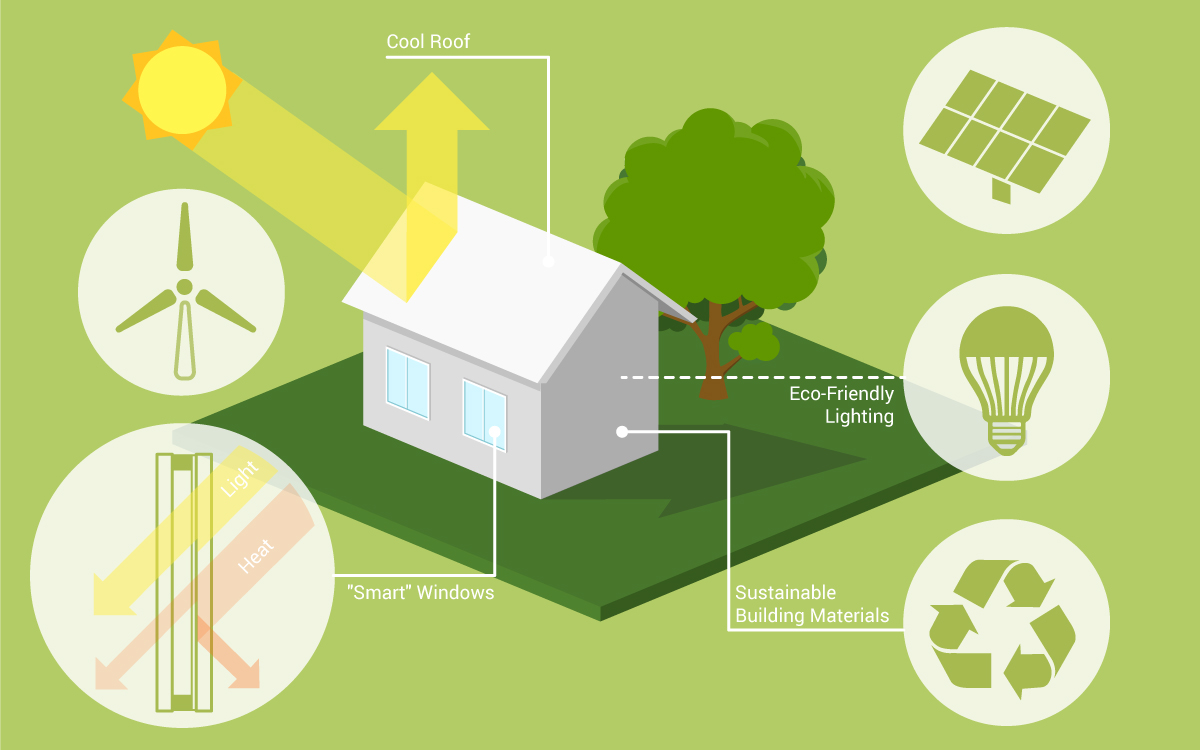bdblogger
July 13, 2016
Category: Construction, Trends & Innovations
“Green” construction and why it matters

“Green” building, sustainable construction, eco-friendly materials – those “buzz” terms permeate today’s information stream, whether you are a fan of old-school press or a Millennial opting for Social Media. The term “Green” has been aligned with environmentalism and sustainability for many years now. Commonly associated with nature and growth, this color is now used to describe many different efforts to reduce the impact of human civilization on the natural world – from energy policies to building designs and economic strategies.
Construction has been strongly affected by the “green” movement and every day we hear about new “green” materials and techniques. Building “green” does not only address environmental concerns. Working with nature in a smart way also sets a new standard in energy efficiency and significantly reduces the cost of running buildings.
Let’s take a look at some of the more prominent “green” trends in construction.
Green Energy
It is no surprise that a lot of “green” construction trends revolve around energy. For most buildings, energy represents one of the biggest operational costs and taking advantage of new technologies will continue to drive the transformation of this sector. Energy efficiency, “zero-net-energy” buildings and cloud-based energy management are just some of the trends that have been affecting construction worldwide. The use of renewables, like wind, solar, geomass, biothermal and hydroelectric power will also continue to rise and affect old and new construction.
Sustainable Building Materials
The need for sustainable construction materials is driven by the increasing global concern about already depleted natural resources, as well as building cost management and control. Since any construction project requires significant amount of resources, incorporating recycled, biodegradable and sustainable materials makes a huge difference. From hemp to wool bricks to solar tiles – we can expect to see more and more sustainable materials on the market that will change the way we build.
“Smart” Windows
This technology goes a step further than energy-efficient windows (commonly labeled as Energy Star®). A new kind of glass can adjust the tint of windows to block not only the visible sunlight but also the heat-producing near-infrared light, allowing for the new levels of versatility and temperature control. This technology is based on the function of nano-crystals embedded in a glassy material that can either block the near infra-red light or allow it to pass through, changing the glass from tinted to transparent state and allowing buildings to save energy during hot days.
Cool Roofs
Cool roofs are designed to reflect more sunlight and heat than standard roofs. This effect can be reached by using a special kind of paint or other reflective materials (like sheet covering, tiles or shingles). The result is a cooler home that requires less air conditioning and a reduced electric bill. Cool roofs can also positively affect the environment on a large scale, if many buildings in the area have them, resulting in a reduction of local temperatures and lower peak electricity demand.
Eco-Friendly Lighting
From changing your light bulbs to the more energy-efficient ones to making the best use of natural sunlight, there are many ways to light your home the “green” way. LED technology, which allows for the most efficient and long lasting light bulbs, is currently hitting the market in a big way, driven by its increasing affordability. Considering sun exposure for new construction can go a long way as well. For example, placing windows on the South-facing side of the house will allow you to capture more natural sunlight. The lamps and light fixtures can themselves be eco-friendly if made from recycled or reclaimed materials, which can include metal, glass or wood. Dimmers and motion sensors are also a great way to manage the lighting needs of private households and commercial buildings.
These are just a few of the many “green” trends affecting the construction industry today. While addressing the global environmental concerns, these trends also drive down the cost of building construction and maintenance, while providing greater levels of sustainability, efficiency and comfort.